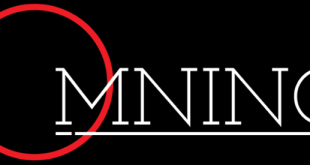Written by Gabe Burns, Editor-in-Chief
“Everything that goes up must come down. But there comes a time when not everything that’s down can come up.”
That quote, made famous by the late comedian George Burns, recognizes the reality that unfavorable conditions don’t always improve. Recently, VSU has undergone what most schools would consider unfavorable conditions.
Since 2011, the university has been losing students. But after suffering through a five-year drop in enrollment, VSU may break the trend and find itself rising again.
VSU is a single unit comprised of its majors. To see the big picture, first examine the minuscule parts.
Suffering and healthy departments alike scrambled to produce fresh recruiting methods. Withstanding much of the decline was the communications department because of what it embodies. Dr. Deborah Robson, a speech communications professor who headed the department for five years, said the degree’s versatility and real-life application plays a large role in attracting students. She said she chose the major for its flexibility, and her students have followed suit.
“It’s something students can do the most with without getting graduate degrees,” Robson said. “All kinds of surveys and studies of employers have indicated that nine out of the top 10 things they’re looking for in employees are communication skills. Our students know they can get jobs and do well in the field.”
Robson specifically referenced the National Association of Colleges and Employers. The department receives its data from NACE’s annual survey, which asks employers to identify the top 10 skills they value in college graduates. As Robson said, nine of those skills directly pertain to courses taught in communications. These skills include leadership, teamwork, written communication, problem-solving, verbal communication, initiative, flexibility, work ethic and technical expertise. She adds that Fortune 500’s list of best skills is “dominated” by traits taught in the department.
Stephen Hall, a 21-year-old junior majoring in speech communications, said both he and his peers are confident in their ability to get jobs. He praised the department for students’ extraordinary preparation for the work force as well as the availability of internships.
“A lot of students have post-graduate plans and jobs lined up, and I’ve yet to hear anyone ever express any doubts or concerns about their future,” Hall said. “Internship opportunities are consistently available and with a major that covers a broad spectrum of potential careers, it opens a lot of doors, and I think the students understand that as well.”
Hall’s praise is supported by the data. The VSU communications department’s student placement rate remains steady, having dropped from 681 students in spring 2011 to 642 in fall 2015. Per Robson, that is because a degree in communications provides students with arguably the most valuable skill in the work force: the ability to network and connect with others. She adds that is a reason why communications majors are often able to pursue careers in the media.
Many graduates go into public relations, according to Robson, and added that entrepreneurship is fairly common.
“This major lends itself to people (who) love ideas about their own life,” Robson said. “Communications teaches you to be persuasive in an ethical way.”
The department keeps tabs on its graduates and uses that to appeal to prospective students. One such database was assembled by Robson and supports her job placement comments. Teaching at VSU since 2002, she assembled a list of graduates with whom she has stayed in touch. The document lists 219 graduates, found from LinkedIn, with their majors and current jobs as of October 2015. All of the individuals charted were employed.
Of the 219 alumni listed, 148 graduated with an emphasis in public relations (68 percent). Those with a “general speech” emphasis and intercultural organizational communications degrees make up the remaining 32 percent. Those students’ jobs were wide-cast, with occupations in sales, management and marketing.
Robson and Hall agreed that the versatility of a communications degree prevented a steep enrollment decline. The aforementioned enrollment regression (681 to 642) stacks up favorably with similarly sized universities in the area, according to USG’s statistics.
Statistics indicate that since fall of 2011, West Georgia, a school with a student population nearly identical to VSU, increased its communications enrollment. UWG added 144 students in a five-year span, though its average of 409 enrollees is significantly below VSU’s 682. So despite the steady increase, UWG’s department remains below VSU even with the schools being on the same tier population-wise.
Georgia Southern is a different story altogether. The school has deactivated its communication department after averaging 70 enrollees in the five-year period.
A primary reason for the department’s health is VSU’s effort to evolve with the times, according to Robson. In communications, emphasis on social media has taken precedence.
Communications departments are focusing on social media. Robson said that the new curriculum emphasizes educating students in social media and data analytics, areas where she said many of them know less than they initially believe. She estimates that social media platforms will take over as the leading employer for communications graduates.
“We are trying to shift them more to prepare for those kinds of jobs,” Robson said. “We want to give them skill sets for the professional world.”
Robson’s department is a microcosm of the university. VSU’s new recruiting and retention emphasis, which includes VSYou and the 70/80 Task Force, has statistically slowed the bleeding. Like communications, the school as a whole appears to be rebounding.
But how did the decline unfold? From fall 2011 to fall 2015, VSU’s enrollment decreased from 13,089 to 11,302, resulting in 31 faculty layoffs as of summer 2016. Some of that can be attributed to a struggling economy, according to Tee Mitchell, Interim Director of Enrollment Services. Mitchell referenced the high number (40 percent) of Atlanta natives who make up VSU’s student body. Atlantans decided to stay in their area, hurting schools around the state.
For example, the USG’s Fall 2015 Semester Enrollment Report indicates a .40 percent decrease for Georgia Southern, a 1.9 percent reduction at ABAC and equal 2.3 percent declines for VSU and Augusta University. Meanwhile, Georgia Tech (8.3) and Atlanta Metropolitan State College (3.2) enjoyed healthy increases.
“When the economy goes south, so do the enrollment numbers, specifically South Georgia,” Mitchell said. “As the economy tanks, people leave South Georgia to find jobs. That’s a big piece of it.”
Combined with the aforementioned VSYou campaign and 70/80 Task Force, VSU is allowing in-state tuition for Florida, South Carolina and Alabama. The revamped effort is making an impact.
Applications are up 59 percent while the acceptance rate has jumped up 23 percent from a year ago. Mitchell pointed out over 1,400 students were at the most recent open house and the school is made up of individuals from all 50 states. He praised the new administration for the positive shift.
“I think what we have in place from a leadership standpoint is one of the best in the state,” Mitchell said.
As communications and other departments experience restoration, the university as one entity will improve. Mitchell said he believes the school is on the upswing.
“I think we’re in a good place,” he said. “I think we are in a position to turn the trend.”
 The Spectator The independent student newspaper of Valdosta State University
The Spectator The independent student newspaper of Valdosta State University






